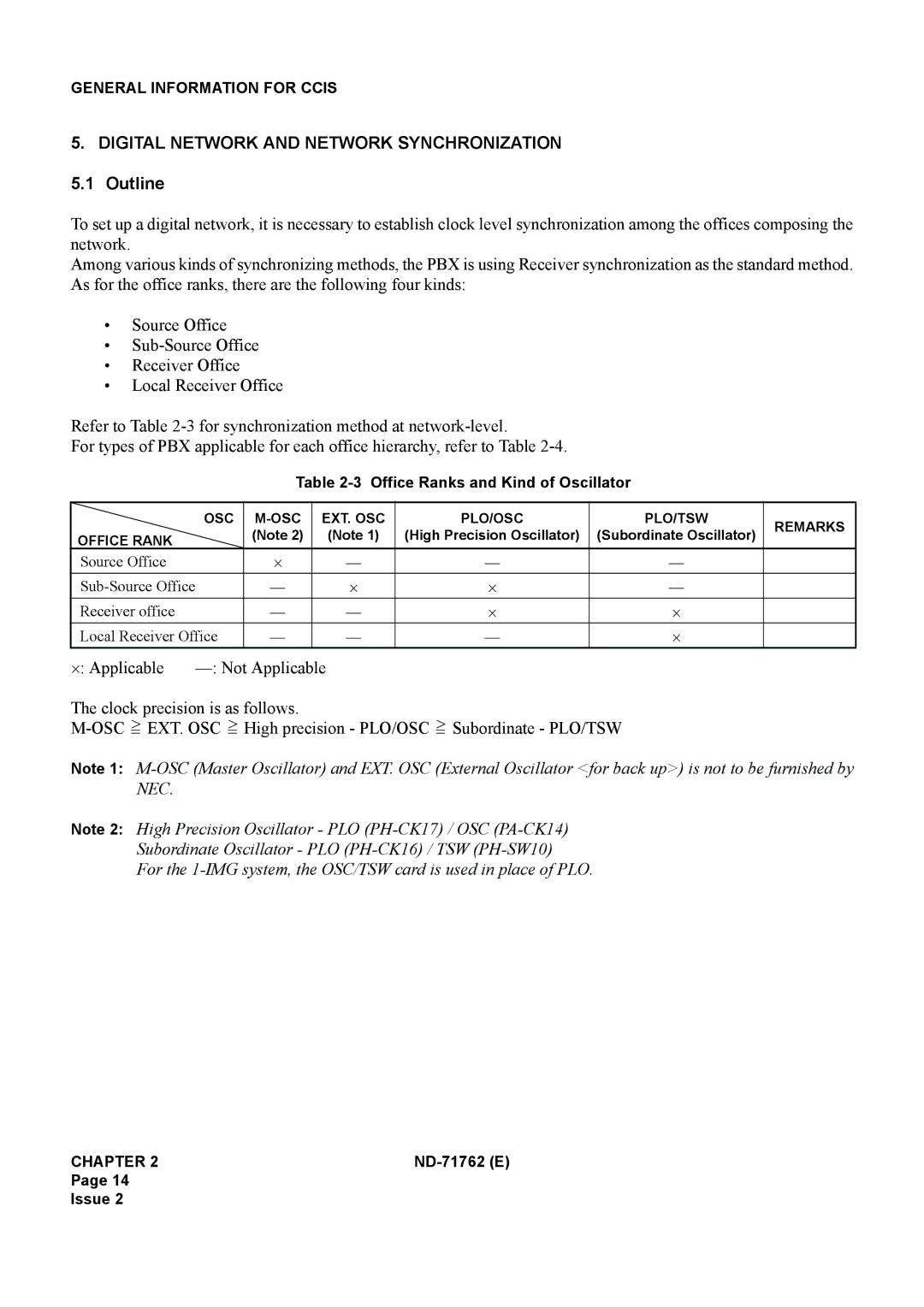GENERAL INFORMATION FOR CCIS
5.DIGITAL NETWORK AND NETWORK SYNCHRONIZATION 5.1 Outline
To set up a digital network, it is necessary to establish clock level synchronization among the offices composing the network.
Among various kinds of synchronizing methods, the PBX is using Receiver synchronization as the standard method. As for the office ranks, there are the following four kinds:
•Source Office
•
•Receiver Office
•Local Receiver Office
Refer to Table
For types of PBX applicable for each office hierarchy, refer to Table
Table 2-3 Office Ranks and Kind of Oscillator
| OSC | EXT. OSC | PLO/OSC | PLO/TSW | REMARKS | |
OFFICE RANK |
| (Note 2) | (Note 1) | (High Precision Oscillator) | (Subordinate Oscillator) | |
|
| |||||
|
|
|
|
|
| |
Source Office |
| ⋅ | — | — | — |
|
— | ⋅ | ⋅ | — |
| ||
Receiver office |
| — | — | ⋅ | ⋅ |
|
Local Receiver Office | — | — | — | ⋅ |
| |
⋅: Applicable |
|
|
| |||
The clock precision is as follows. |
|
|
|
| ||
| ||||||
> | > |
|
| > |
|
|
Note 1:
Note 2: High Precision Oscillator - PLO
Subordinate Oscillator - PLO
For the
CHAPTER 2 |
|
Page 14
Issue 2
